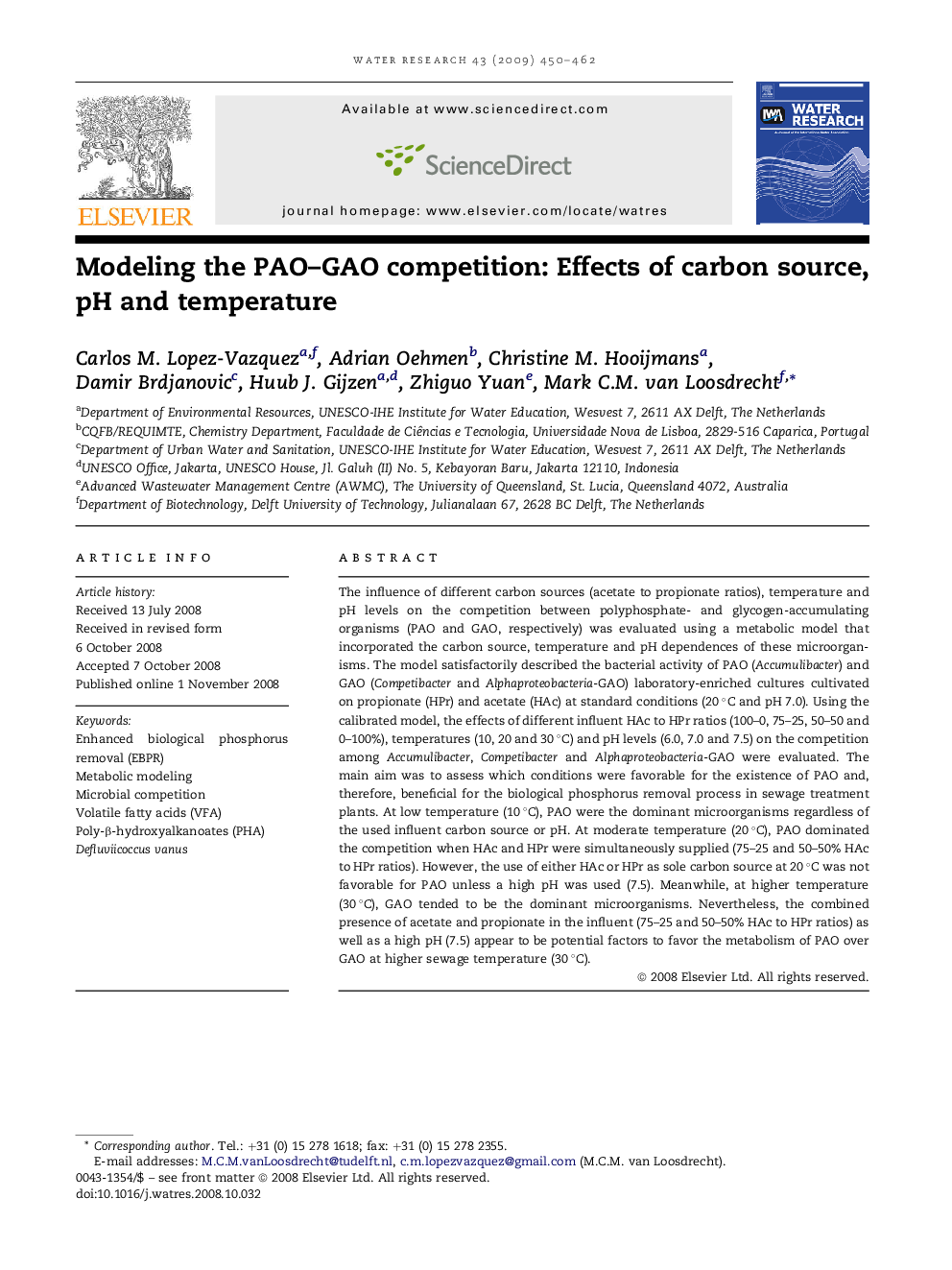| کد مقاله | کد نشریه | سال انتشار | مقاله انگلیسی | نسخه تمام متن |
|---|---|---|---|---|
| 4484445 | 1316920 | 2009 | 13 صفحه PDF | دانلود رایگان |

The influence of different carbon sources (acetate to propionate ratios), temperature and pH levels on the competition between polyphosphate- and glycogen-accumulating organisms (PAO and GAO, respectively) was evaluated using a metabolic model that incorporated the carbon source, temperature and pH dependences of these microorganisms. The model satisfactorily described the bacterial activity of PAO (Accumulibacter) and GAO (Competibacter and Alphaproteobacteria-GAO) laboratory-enriched cultures cultivated on propionate (HPr) and acetate (HAc) at standard conditions (20 °C and pH 7.0). Using the calibrated model, the effects of different influent HAc to HPr ratios (100–0, 75–25, 50–50 and 0–100%), temperatures (10, 20 and 30 °C) and pH levels (6.0, 7.0 and 7.5) on the competition among Accumulibacter, Competibacter and Alphaproteobacteria-GAO were evaluated. The main aim was to assess which conditions were favorable for the existence of PAO and, therefore, beneficial for the biological phosphorus removal process in sewage treatment plants. At low temperature (10 °C), PAO were the dominant microorganisms regardless of the used influent carbon source or pH. At moderate temperature (20 °C), PAO dominated the competition when HAc and HPr were simultaneously supplied (75–25 and 50–50% HAc to HPr ratios). However, the use of either HAc or HPr as sole carbon source at 20 °C was not favorable for PAO unless a high pH was used (7.5). Meanwhile, at higher temperature (30 °C), GAO tended to be the dominant microorganisms. Nevertheless, the combined presence of acetate and propionate in the influent (75–25 and 50–50% HAc to HPr ratios) as well as a high pH (7.5) appear to be potential factors to favor the metabolism of PAO over GAO at higher sewage temperature (30 °C).
Journal: Water Research - Volume 43, Issue 2, February 2009, Pages 450–462